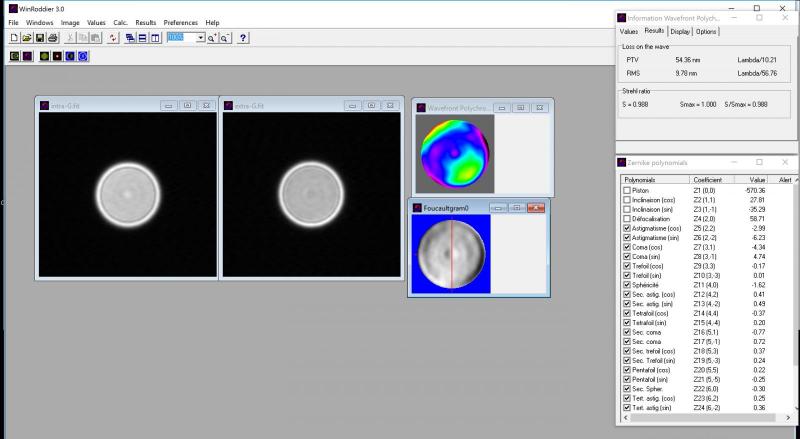Hi Joachim,Hi Jay,
I would love to believe that (as then my so far slightly undercorrected - that's what clear rings before and mushy later means) TSN-3 might be actually better than it looks in star test - and yes, the daytime view is very sharp even at high magnification.
Although regarding that link I have to say that it is a far stretch to say that the 2nd star test with green filter results into sth. as bad as the 3rd one in white light... the effect is much less pronounced.
Also stating that "the best test of any optics is in focus" leaves me kinda puzzled... for the in focus image to be visibly degraded you need quite strong aberrations - often worse than diffraction limited. The normal star test with out of focus diffraction patterns is much more sensitive than that.
Lastly it does not really look like a carefully researched article when the "noted optical designer of the Astro Physics refractors" is called Roland Christensen... the man's surname is Christen.
See the link below for what the effect looks like in a good scope (white light in post 1, green light in post 20):

Doubts about Taka FC100D star test - Refractors - Cloudy Nights
Page 1 of 4 - Doubts about Taka FC100D star test - posted in Refractors : Good morning everyone, attached you will find star test of my new Takahashi FC100DF (100 mm f/7,4 fluorite doublet), in white light. I know that apochromats often dont show identical extrafocal and intrafocal patterns...www.cloudynights.com
The Tak in that link has an admittedly easier task being quite a bit smaller at 100 vs 140mm aperture plus slightly slower at f7.4 vs f7 and also being a fluorite doublet vs a doublet with an unnamed ED glass - might be fpl-51 or so which will be a stretch to get to work acceptable in a doublet that large, fpl-53 et al. performance should be close to fluorite though at same aperture and focal ratio.
Joachim
Thank you for links of the Tak star test. That’s almost a perfect scope/test and the OP had quite a lot analytical data on it and gears there.
Yes. The link I posted has some quirks and misspelled Roland Christen. I also suspected the part to check on focus image. But the referred (thought misspelled name
I don’t have astro scopes and instruments like green filters and 532nm lasers to check those fine test so I can’t comment.
I have simple star test with artificial star as described this forum with my spotting scopes. Thought I can’t take pictures but for seeing the same trends of patterns (clear inner rings and barely visible outside rings). That puzzled me since those scopes are Nikon ED fieldscope and Kowa fluorite. Statistically if they’re all bad samples based on star test results with excess SA, the chance is so unfortunately high? (5/5)
For curiosity to find the explanation so Googled the link with Roland’s comments. For me it is not perfect but explained some of my observations.
Jay
Last edited:





